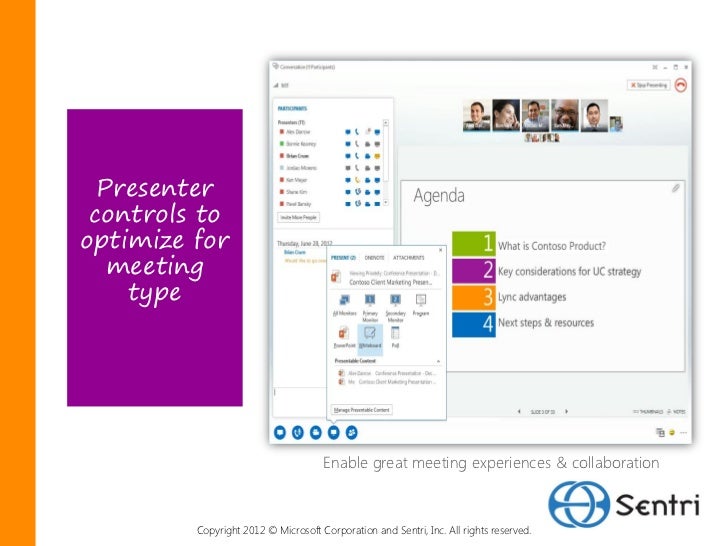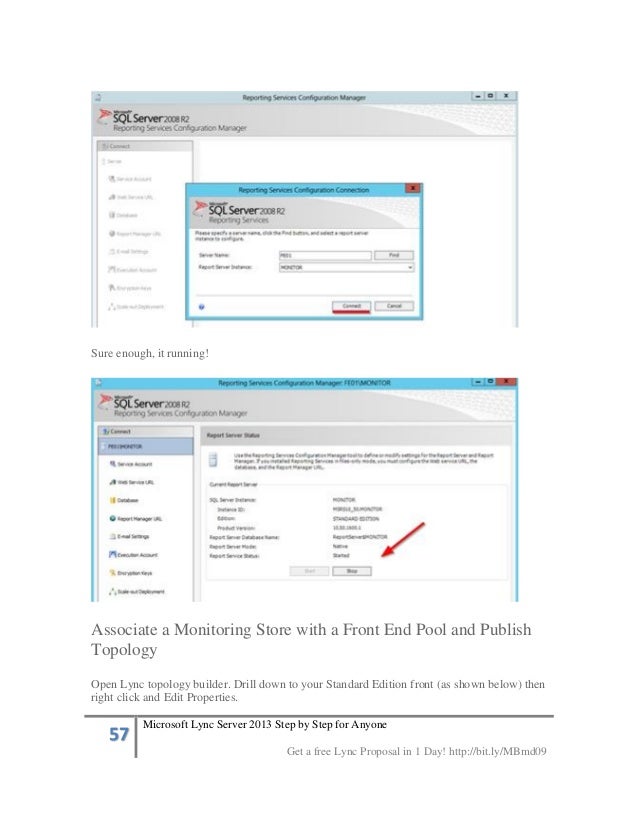

“Persistent” means a history of the chat session is retained, so users can jump into a chat room and get up to speed with the conversation that has already taken place. Persistent chat: Formerly known as group chat, this new server role has several components: PresistentChatService, PersistentChatStore, and PersistentChatComplianceStore. The A/V Conferencing Server is always located with the Front End role as well, and the Director role is no longer “recommended” but optional Microsoft says you can “safely exclude the Director with confidence that the Front End Servers will provide the same services in their place.” Topology changes: Rather than having separate server roles for monitoring and archiving (as Lync 2010 did), Microsoft has moved both roles into the Front End Server role as optional features.
 Disaster recovery and high-availability improvements. Role-based access control (RBAC) feature. I’ll also discuss other noteworthy enhancements made to the: I’ll discuss the server role changes as well as other changes to Lync Server 2013’s topology. There are several significant architectural changes that simplify the deployment of Lync Server 2013, with one of the biggest being server role consolidation. (In case you’re unfamiliar with Lync, presence is a feature that displays a user’s availability, willingness to communicate, and contact information.) Like its predecessor, Lync Server 2013 provides support for enterprise IM, presence, and conferencing, with direct integration to the Microsoft Office suite of applications. Microsoft Lync Server 2013 does a commendable job building on the features introduced in Lync Server 2010, making the transition to this new version compelling for IT managers and unified communications (UC) implementers.
Disaster recovery and high-availability improvements. Role-based access control (RBAC) feature. I’ll also discuss other noteworthy enhancements made to the: I’ll discuss the server role changes as well as other changes to Lync Server 2013’s topology. There are several significant architectural changes that simplify the deployment of Lync Server 2013, with one of the biggest being server role consolidation. (In case you’re unfamiliar with Lync, presence is a feature that displays a user’s availability, willingness to communicate, and contact information.) Like its predecessor, Lync Server 2013 provides support for enterprise IM, presence, and conferencing, with direct integration to the Microsoft Office suite of applications. Microsoft Lync Server 2013 does a commendable job building on the features introduced in Lync Server 2010, making the transition to this new version compelling for IT managers and unified communications (UC) implementers.






 0 kommentar(er)
0 kommentar(er)
